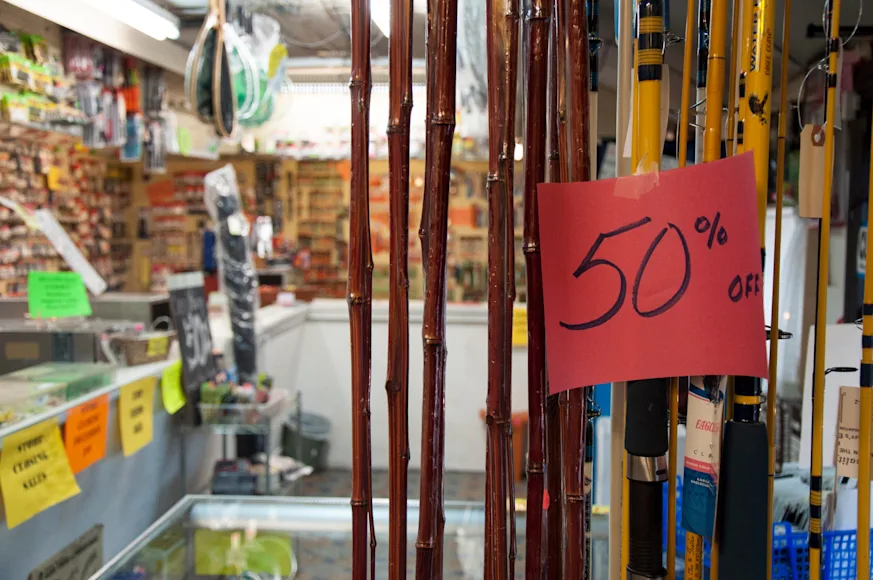_We may earn revenue from the products available on this page and participate in affiliate programs. Learn more ›
_
I’ve met every kind of fishermen imaginable, and the one I like the least is the guy who insists that everything he has—from his socks
to his sunglasses
strap—is the most expensive money can buy. Coincidentally, I’ve also noticed that, most of the time, those guys are also piss poor anglers. On the other hand, some of the best anglers I know run beat-up boats with sputtering engines and use a bucket as a tackle box. The difference between the two is that one knows exactly what he needs to catch piles of fish, and the other thinks he knows what he needs to look like to catch piles of fish.
As in many sports, fishing gear
can be both functional and a status symbol. I certainly don’t begrudge anyone anything: If you’ve got the money to buy the best of the best, congratulations. But I don’t, and I’m betting many of you don’t either. So, where should you save your money and where is it really worth splurging? It’s a hard question to answer, because it’s often situational and dictated by the fish you’re after. There are, however, pieces of tackle kits that apply broadly to all anglers—some of which I think people spend too much on, and others too little. You may disagree with parts of my fishing-gear investment strategy outlined below, but after nearly 20 years of testing all manner of gear and tackle in every price range, I can tell you these tips are working wonders for my angling budget portfolio.
Where to Splurge
Hooks
I don’t care if you have a thousand-dollar rod
and reel or you’re fishing with grandpa’s Mitchell 300 on a cane pole with taped-on guides—you should have premium hooks
tied to the end of your line. Regardless of what you chase, where, and how, if that hook doesn’t stay in the fish’s mouth, the rest of your gear and skills mean squat. Yet despite this, people just love to buy budget hooks. I could never figure this out.
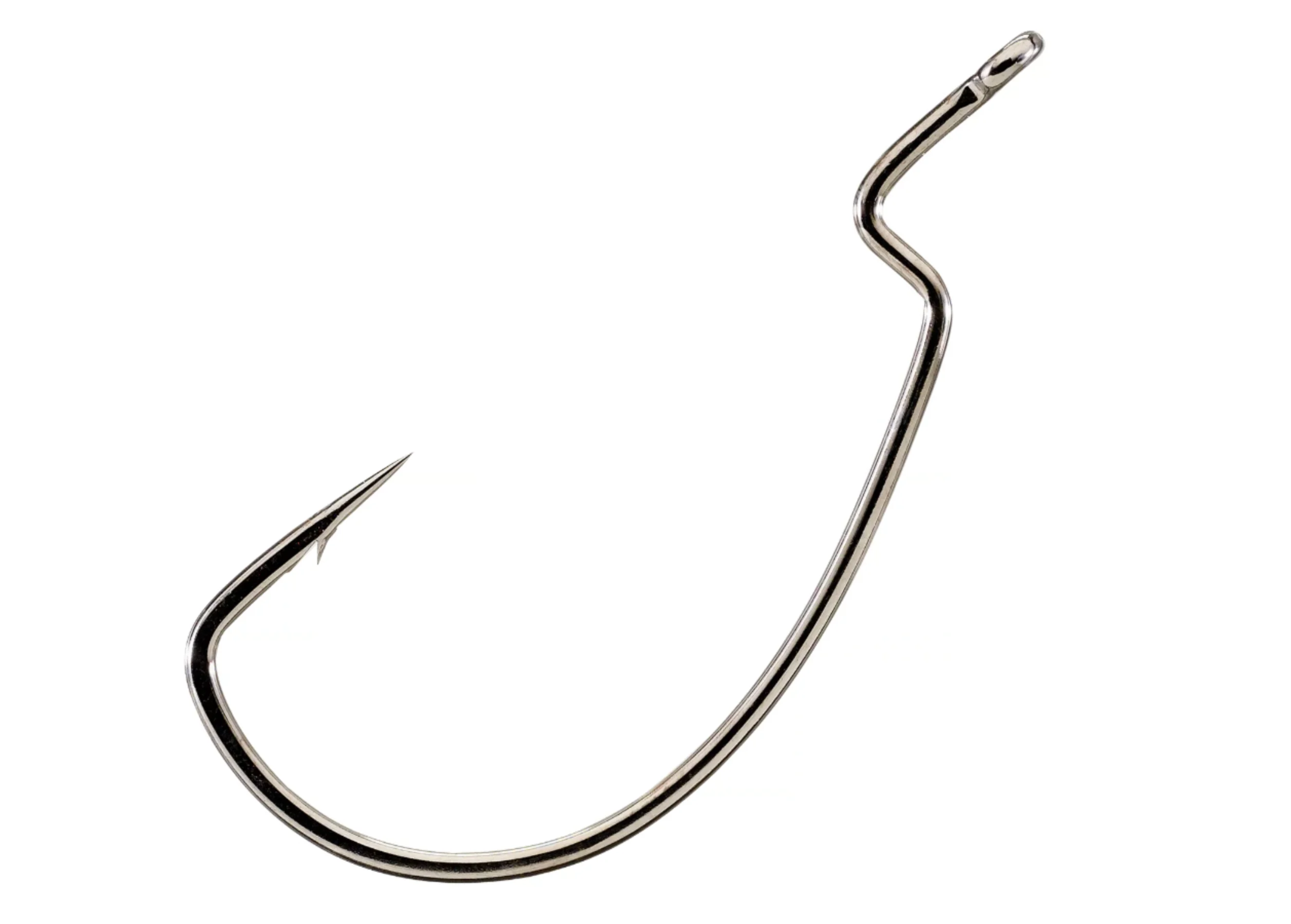
Years ago, there was a website that sold flies for a dollar a piece. It didn’t matter if you were buying Zonkers or midges, they were a buck. This was a dream for a young, broke kid like me who winced at the price of 12 nymphs at the fly shop and cringed every time I lost one. When I first found the website, I stocked up for spring, and my fly boxes
were brimming. During my first trip of the season, I hooked nine trout and lost every single one because the hooks were so flimsy that they’d bend out under minimal pressure. The lesson l learned: Beware of cheap lures and flies because they probably come with cheap hooks. It has stuck with me ever since.
I hear anglers scoff at the price of Gamakatsu, Owner, and VMC hooks all the time, which makes little sense. Even though you might be getting fewer hooks for more money than you’d spend on the bulk pack of budget hooks at Wal-Mart, it’s still not as if you’re buying a reel or rod. A pack of hooks—even good hooks—is still pretty cheap, and it’s worth it for the satisfaction of knowing that while a million other things can go wrong during a fight, the hook breaking or bending isn’t likely to be one of them.
So, why are premium hooks better? Because they tend to be made of harder metal and are often chemically sharpened. They’re also more corrosion resistant. A premium hook can take a lot of abuse before the point becomes dull and needs to be resharpened. On the flip side, I’ve seen lots of lure hook points roll after one fish or one knock off a log. So, if your lure doesn’t have premium hooks, change them. In the grand scheme of things, it’s a minimal investment that will go a long way. There’s no excuse for losing a fish to a junk hook.
Braided Line
When braided fishing line
first hit the scene and started gaining popularity, you didn’t have a lot of options. PowerPro lead the charge, and big-name companies with enough money to fund legitimate research and development, like Sufix and Berkley, soon introduced comparable products. In those early days, making quality braid was a process that required highly sophisticated machinery and materials, which explained why it cost so much more than a spool of monofilament. Nowadays, it’s not difficult to find braid that’s significantly less expensive than that made by the big players. And while it might be nice to have more braid variety, I promise: You get what you pay for.
Sufix 832 Advanced Superline Braid Fishing Line
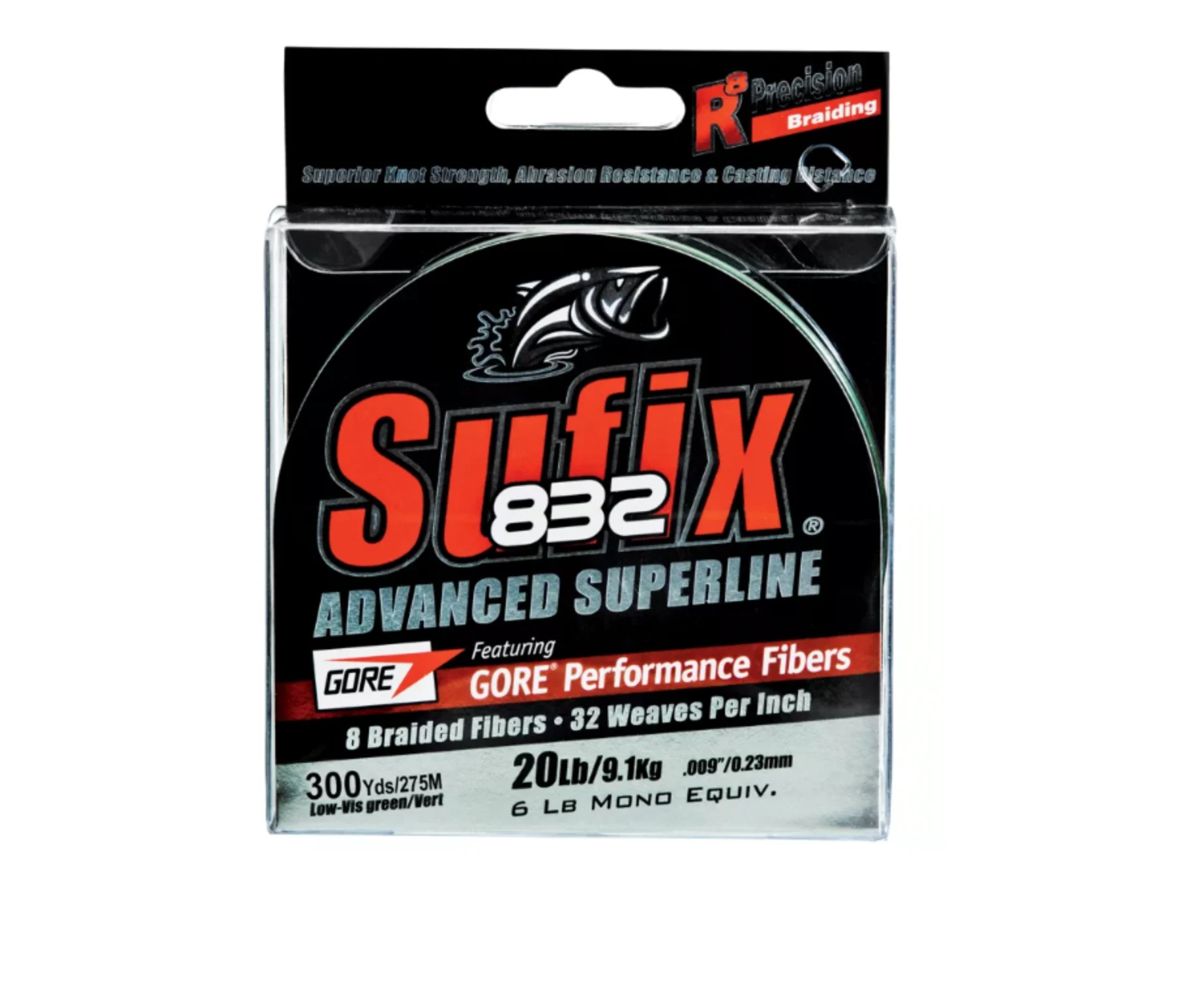
I’ve tested countless braids during my career and can state with the utmost certainty that I’ve yet to find one that I thought was better than those made by the leading manufacturers. Some broke like dental floss. Others frayed incredibly fast. Lots of them seemed fine—until knots slipped. Many lost all their coloring after a few sessions on the water. Tons produced an obnoxious amount of wind knots.
Spend the money on good braid and think of it as a long-term investment. If you pony up for PowerPro or Sufix
or similar, you should easily get multiple seasons out of one spool, especially if you take the time to reverse your line occasionally. I have reels that have had the same braid on them for five years, and I trust it as much as I did the day I bought it. As a general rule, if the price tag for a 300-yard spool is less than $25, be wary of the quality.
Fluorocarbon Leader
Similar to braided line, not all fluorocarbon
is created equal—yet it is a critical piece of gear, whether you’re jigging for tuna, drop-shotting for bass, or casting hopper flies
to trout. Fluorocarbon was originally developed in Japan and popularized in the U.S. by Seaguar, who, in my opinion, still produces the best fluoro on the market. The material is created with a different extrusion and chemical process than monofilament, and the result is a stronger, harder, more abrasion-resistant leader material that virtually disappears underwater. Unfortunately, you can’t exactly judge the quality of the fluorocarbon simply by looking at it or touching it—and companies trying to cash in on the fluoro craze are well aware of this. It has led not only to a bunch of brands claiming their leader is “100% Fluorocarbon” when it isn’t, but also to an entire underground market of fake knock-off fluorocarbon
.
Seaguar Blue Label Fluorocarbon Leader
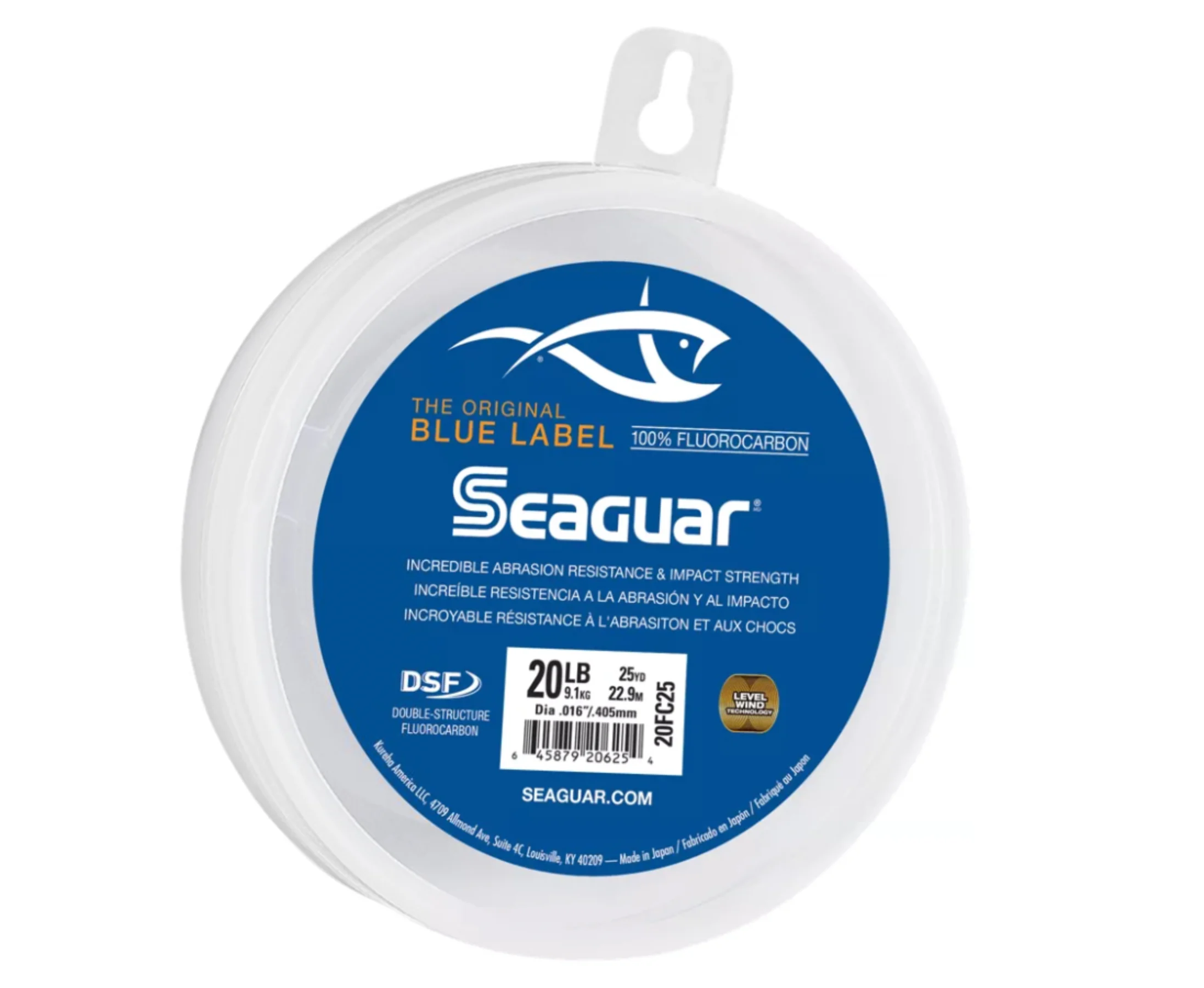
It’s important to keep in mind that I’m strictly talking about leader material—not castable fluorocarbon line, which you’d use to spool your entire reel and that’s significantly less expensive than dedicated leader material. One way to tell if you’ve got the real thing—at least according to the internet—is the burn test, which you can watch here
.
True fluorocarbon is allegedly non-combustible due to its unique chemical makeup, so when you touch it to a flame, it should turn black but not continue to burn. Lower grade or completely fake fluorocarbon (which is likely just monofilament) will burn continuously when you hit it with a lighter. But you need not break out the Zippo to make sure you’ve got the good stuff. Just make sure you buy your fluorocarbon from a reputable tackle shop, fly shop, or website and, like braid, be wary if the price is too good to be true.
If you question whether a $30 spool of fluoro is really better than low-grade fluoro or monofilament leader, all I can tell you is: It is when it matters. As an example, when I’m fishing a reef or wreck, that fluorocarbon leader is the first line of defense if a grouper, snapper, or tautog takes me into the structure. I trust quality fluoro to withstand more rubbing against steel and rock. Likewise, if I’m fishing a crystal-clear stream for trout or smallmouths, there is a definite advantage to those disappearing properties of good fluorocarbon. If your primary love is soaking chunks on the bottom of the lake for catfish, you can probably get away with a cheaper mono leader. Similarly, if you’re fly fishing for bluegills at the pond, you don’t really need the top-shelf stuff. But if you’re considering buying fluorocarbon because strong or wary fish are your targets, do yourself a favor and pay up.
Honorable Mentions on Where to Splurge
Fly Line
A ton of R&D goes into developing fly lines, and the good ones are made with high-quality materials. The line also works as a system with your rod to deliver your flies smoothly and accurately. Using cheap off-brand fly line is like buying a Ferrari and dropping a moped motor under the hood.
Wading Boots
Maybe you can’t spend tons of money on a pair of the best waders
. You may have to patch the budget model occasionally, but the worst you’ll get is wet. Boots, however, provide the traction, ankle support, and comfort that’s going to let you cover that whole 3-mile stretch, safely cross the river, and get back to the truck without blisters.
Charters/Guide Trips
If a guide or captain
is charging significantly less money than the average rate of other guides and captains in the same area, there’s a strong chance it’s because his or her fishing skills and reputation aren’t enough to put asses in boat seats.
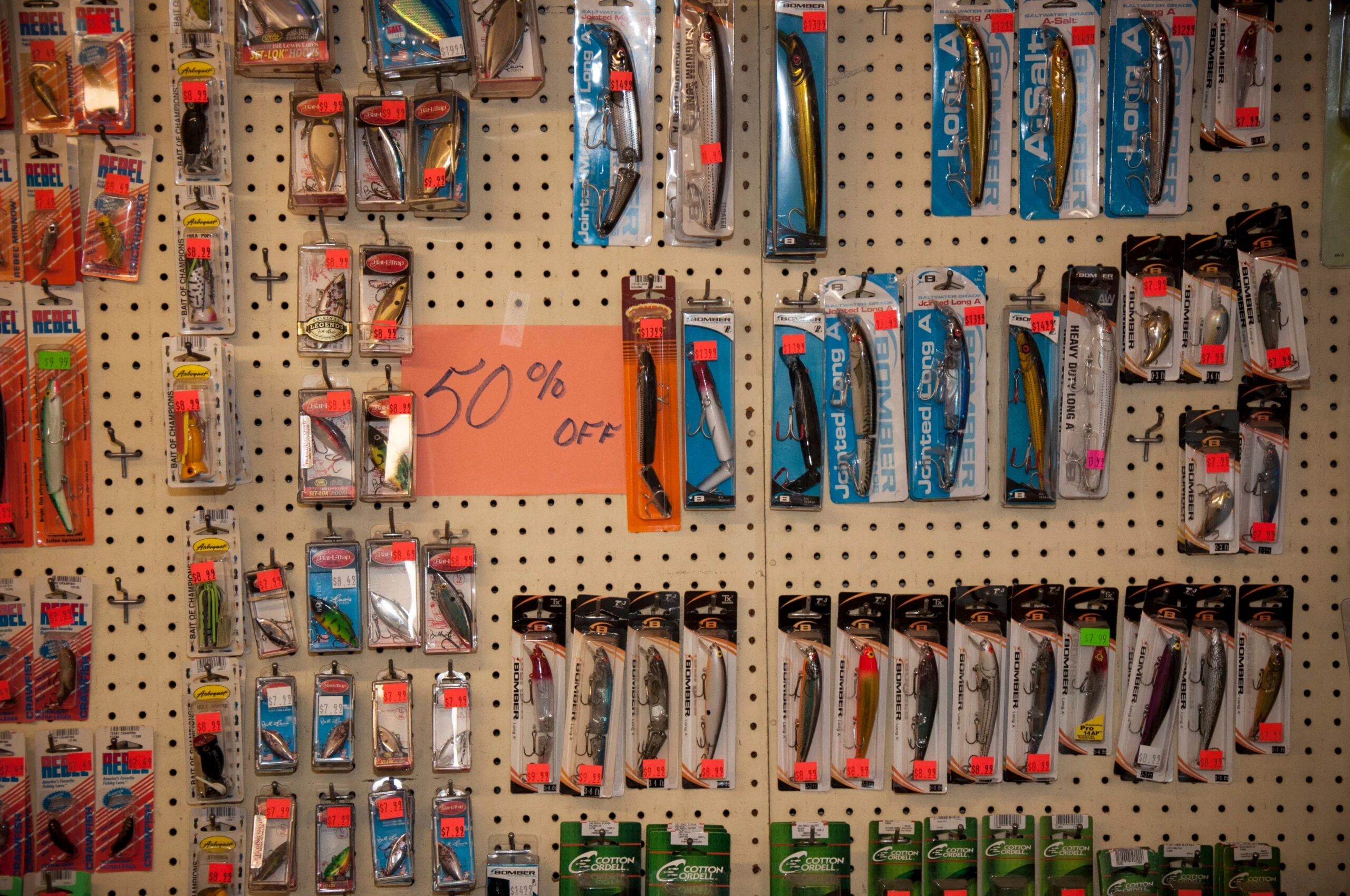
If you buy lures that have cheap hooks, swap them out with the good stuff before you hit the water. Joe Cermele
Where to Save
Nippers, Scissors, and Pliers
I’ve owned some very expensive nippers
over the years—though full disclosure, I didn’t pay for them. I’ve also owned a lot of cheap nippers over the years. Do you know what they have in common? They both disappear easily. Now, I recognize that not keeping track of my fishing tools is a me problem, but I also know I’m not the only angler with this issue. To be honest, I just consider tools expendable. If I don’t lose them or drop them in the river, I’ll pass one to a buddy while we’re on the boat, forget about it, and never see it again. Or he’ll drop it in the river. Point being, gear loss comes with the territory no matter how careful you are, but if you didn’t buy the most expensive pliers, you don’t lose sleep over it.
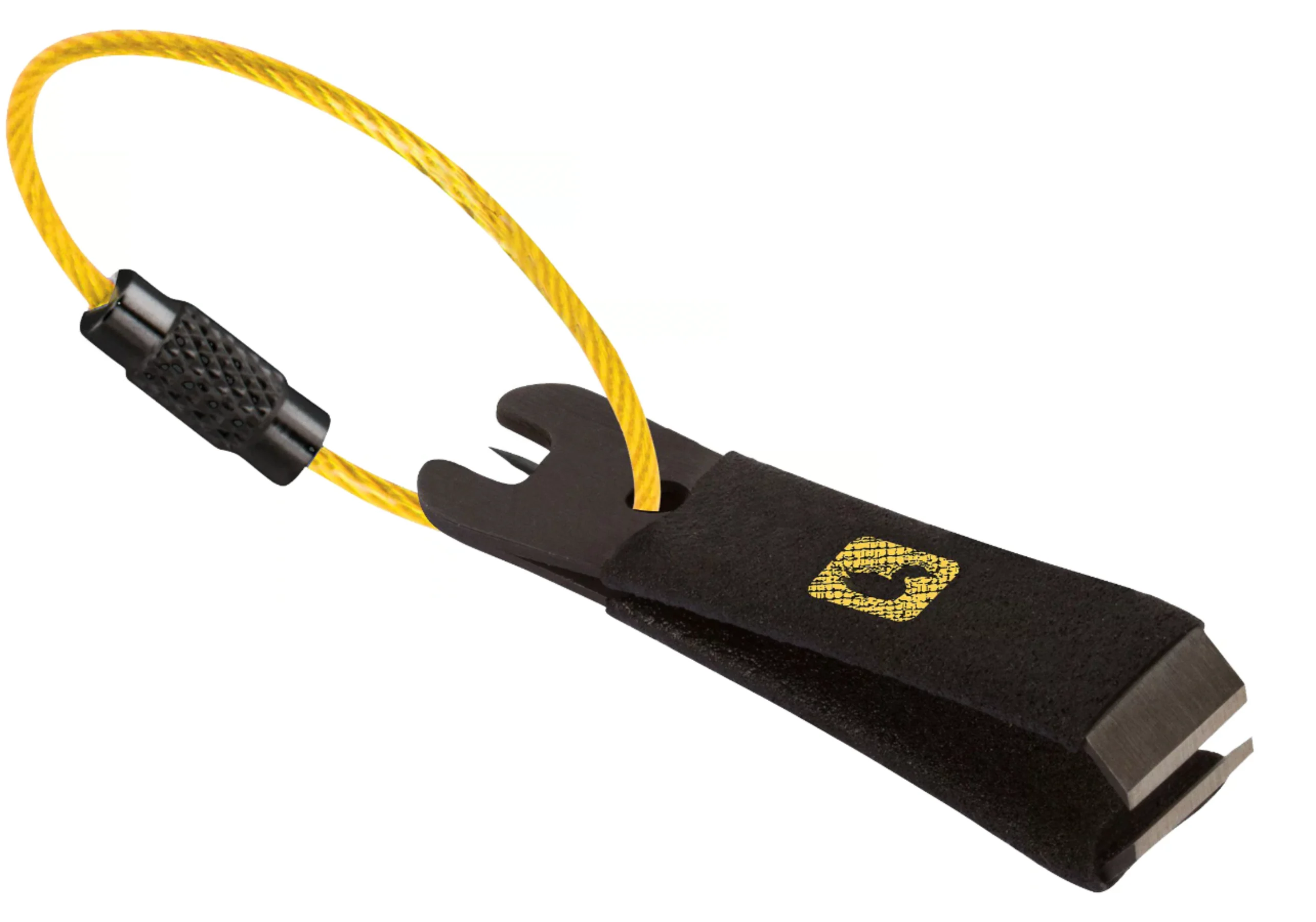
Cheap nail clippers nip tippet; expensive fly nippers clip tippet. Stainless fishing pliers
will rip a hook out of a muskie mouth as effectively as a titanium pair. Will the high dollar ones last longer and likely have sharper cutters? Sure. But I’ve also owned some very expense pliers and the cutting blades do dull eventually. To remedy this, I now have to spend more money on replacement blades and wait for them to be delivered, and sometimes replacement blades cost more than a mid-range pair of pliers
. Just recently I was handed a pair of scissors designed to cut fiber optic cable. They sliced braid like a dream, but no dreamier than the cheap pair of Fiskars
I got at Hobby Lobby.
What I’m not suggesting is buying all your tools at the dollar store. Add water to any of them and they will rust and fail. I am, however, suggesting buying tools in a price range that will get you a couple of seasons, but won’t require therapy if you leave them at the rental cabin. With pliers, $40 is my number. For that I expect a few years of hard work, and when they finally break or disappear, I’ll just go get a new pair.
Fly Reels
Everyone loves the idea of a fly reel
drag that can slow down a Mack truck. But the reality is, most fly anglers will never need that kind of power. Take it from a guy who fly fishes often for a wide range of species. There are only a handful of times each year when I get concerned about the drag capability of my fly reel. Chasing false albacore would be one of those times. Steelhead would be another, because those fish will run you well into the backing. Otherwise, I’m not overly concerned—even with large stripers—because I know they’re only good for a few runs and they’re not usually that far. Barring a defective reel or a complete piece of junk, most mid-priced reels will have a drag fit for the occasional hard carp run or burst of speed from a trophy trout. One of my favorite reels for a very good price is the Redington Behemoth
. It’s a true workhorse that won’t break the bank.
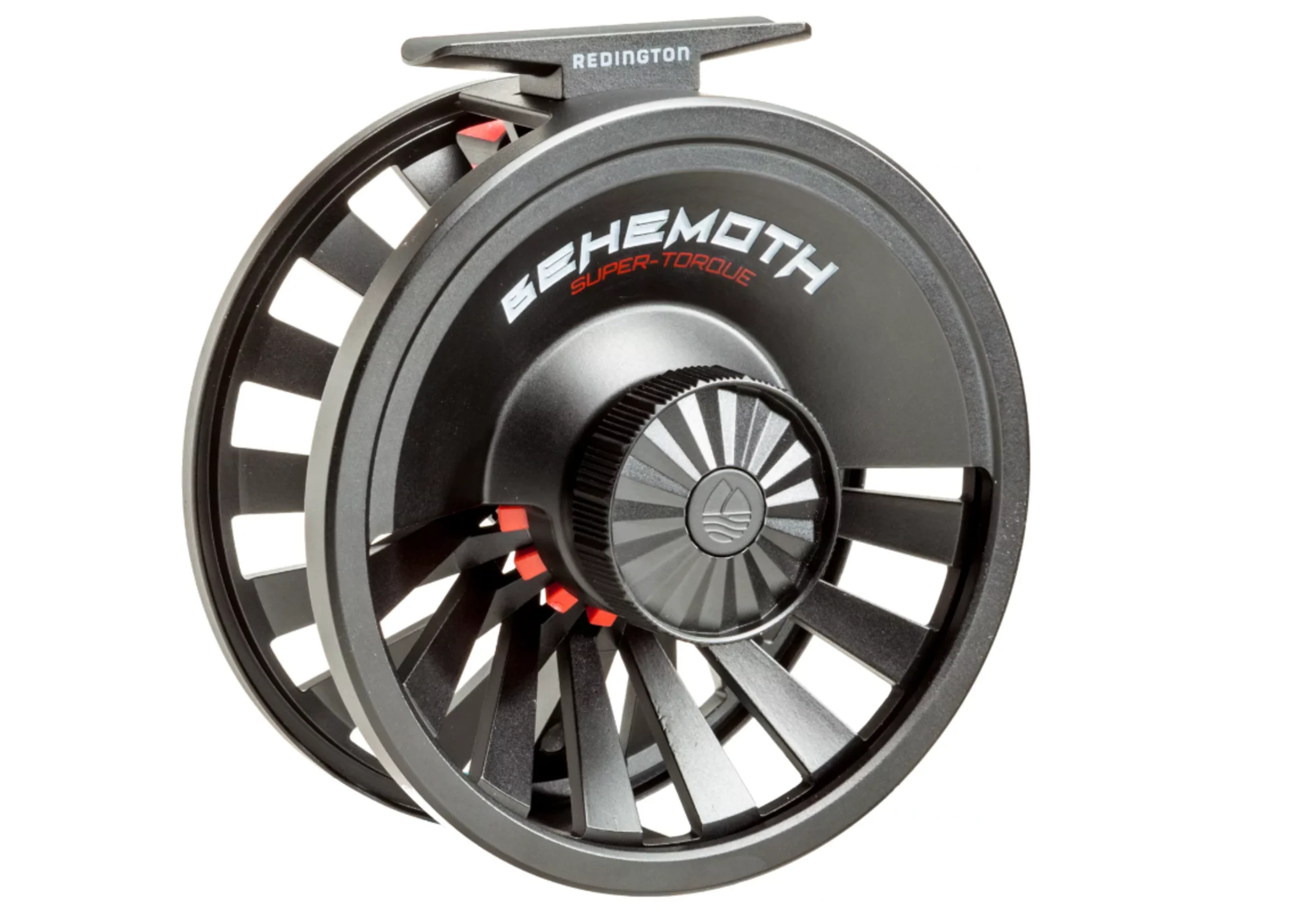
Guys like Lee Wulff and Lefty Kreh were landing bigger fish than most of us routinely catch with click-and-pawl style fly reels. Even today, I’d argue there’s not a trout swimming in this country that couldn’t be effectively landed with a Pflueger Medalist made in 1970, especially if you know how to fight a fish with a fly rod. Does that mean we should all be buying used Medalists at the flea market? Of course not, but when people reach out looking for fly gear recommendations for trout, bass, pike, and even muskies, I tell them to put 75 percent of the budget into a good rod and spend less on the reel. The rod will do more of the work, and ultimately getting the fly where it needs to go is more important than the reel’s ability. With many species like trout, bass, and panfish, you’ll wind up stripping the fish in by hand and never even using the reel.
Nets
I once owned a beautiful handmade landing net
inlayed with purple heart. Then a friend of mine stepped on it. The handle snapped just below the yoke. I was devastated and had to resort to an ancient Cabela’s net kicking around the garage. Four years later I’m still using that Cabela’s net because, turns out, it effectively nets my fish.
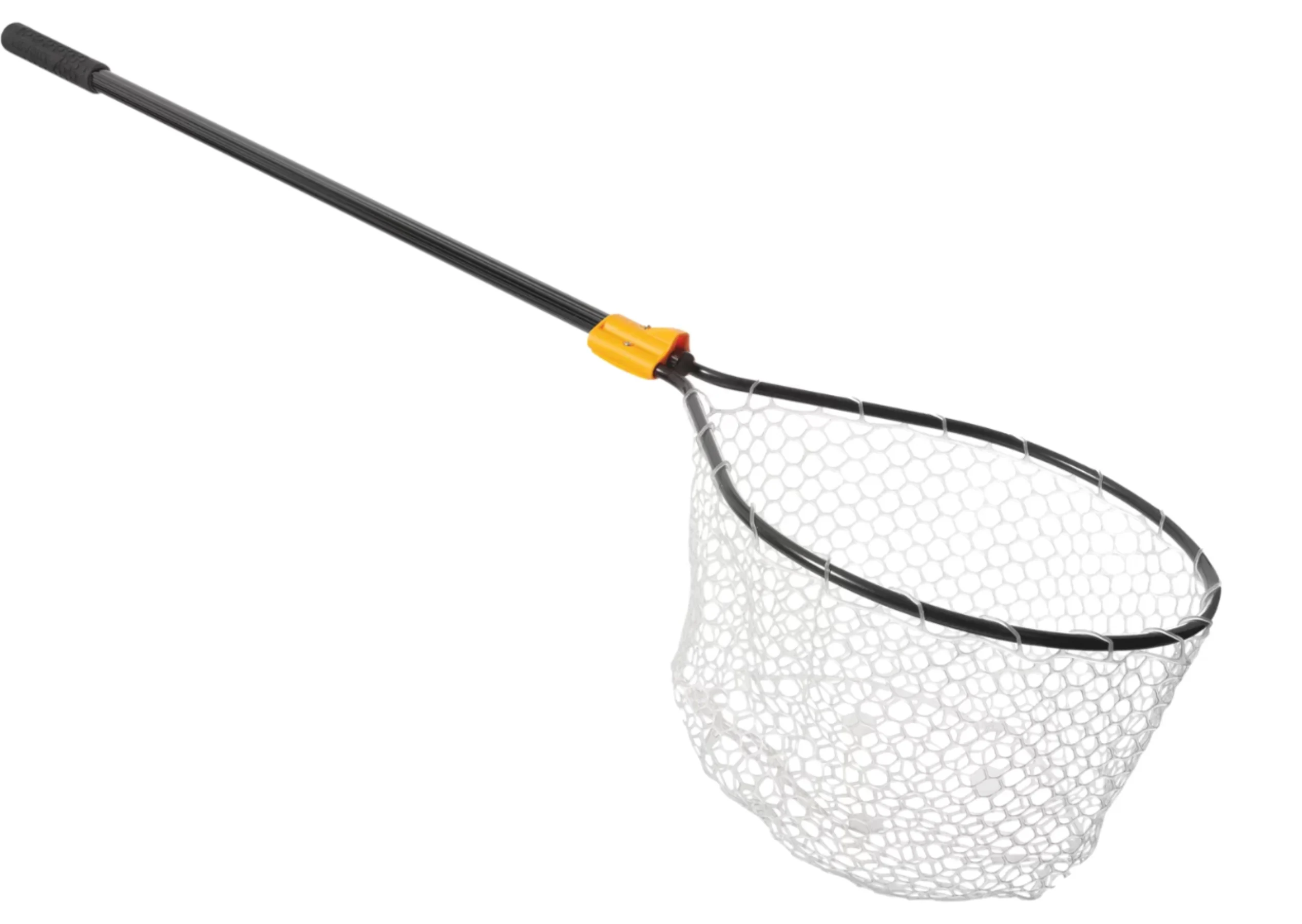
Don’t get the wrong impression: I have the utmost respect for net makers and I’m a sucker for handmade stuff, but I’m also not particularly gentle with my gear. As much as I loved that wood net, I was always worried about something happening to it, until finally it did. If you’ve got the coin for a high-end custom net and don’t fish with ruffians like I do, go for it. But if you need a net as a tool and not a show piece, I believe in thinking more frugally.
There’s a lot of talk these days about bag materials, and there’s merit to the discussion. Rubber mesh is gentler on fish and tangles with hooks less. If you’re targeting a lot of trout, bass, and muskies that will be released, rubber bags
are worth some extra money. That said, I also don’t believe old-school nylon mesh is so harmful that using it should make you a pariah. At the end of the day, whether you commission a custom net or grab the $11 version, the fish will end up in the bag.
Honorable Mentions on Where to Save
Tapered Fly Leaders
A tapered leader is essential to proper fly delivery. But a single tapered leader is going to set you back $3 or much more in some cases. If you can tie a Blood knot
(and you can, right?), you’ll save money buying larger spools of leader and tippet material and building your own tapered leaders. People think this is complicated, but it’s pretty simple.
Ice Fishing Rods
I’ve fished with some guides that had beautiful custom ice fishing rods
. What they had in common was they were all targeting big, hard-fighting fish—like trophy lakers and pike—that required specialty lures and tactics. If you’re just jerking perch, crappies, and bluegills through a hole at the local lake, I think spending crazy money on a high-end mini rod is kind of ridiculous.
Worms
If you’ve got a shovel and lawn, you’ve got worms
. Now, I understand the convenience of buying a tub must be factored. I don’t only use worms I dig, but digging worms is pretty fun, especially if you have little kids. If you put some time in, you can even build an inexpensive little worm bed for your haul. If you fish a lot, the effort will save you dough in the long run.

